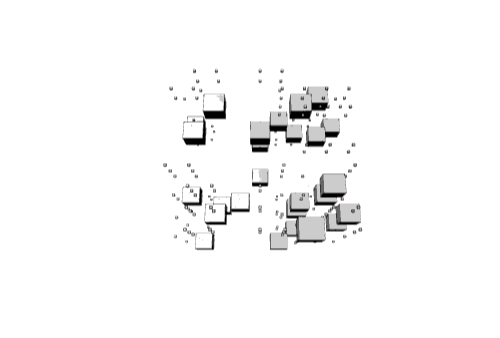The Future is Decentralized and Decoupled
Take a look at new technologies coming on the scene. Do you see a trend? The future is decentralized and decoupled. Among other things, this is the natural state of a system growing in robustness and ‘trying’ to preserve its self.
\1. Docker: The future is about containers of computing, not servers and VMs. Docker calls its self the Linux container engine. No dependencies and no environments. Wrap up the entire computational process (OS, file system, and all) and run it on the metal of any Linux box.
\2. Diaspora: An open source distributed social network. Fire up your own Diaspora pod and freely connect with other pods. Diaspora is an open source social network of social networks if you will.
“Diaspora is a nonprofit, user-owned, distributed social network. Diaspora consists of a group of independently owned pods which interoperate to form the network.” - wikipedia
\3. Bitcoin: A crypto currency with no central controller or central bank. This makes it possible to send someone money without intermediaries and with without fees. Bitcoin is basically digital cash. An interesting take.
\4. BitTorrent magnet links: Central trackers are no longer required for p2p file sharing. The magnet link contains everything necessary to connect to others who posses the file you are trying to download. This means that even if a file-sharing site is taken down, it makes no difference. Hollywood is not a fan.
“A magnet link does away with the middleman. A magnet link is essentially a hyperlink containing the hash code for that torrent, which your torrent client can immediately use to start finding people sharing those files. Magnet links don’t require a tracker..” - lifehacker
\5. Crowdfunding: Forget Wall Street along with Hollywood. You don’t need the VC suits anymore. Go directly to the people with products and services and get funded from the masses. Latest on crowdfunding rules.
What’s to come? There are two central advances that will have huge impacts on the stability of our current web infrastructure.
\1. Distributed DNS: DNS is the major weak point of the existing architecture of the Internet. This is exactly why the hacker group Anonymous discussed targeting the DNS server when they were contemplating trying to bring down the entire Internet. The largest contenders for a distributed DNS are based on the Bitcoin protocol. Tech writer Rowan Puttergill points out:
“Attempts to create alternative DNS infrastructures that cut ICANN out of the loop, are not new, but they usually end up creating little black-holes on the internet, where only a few adopters share access to the sites that they are interested in.” - http://bit.ly/11k0d2I
What would be wonderful would be a backwards-compatible distributed DNS system. One that builds on top of and extends the current setup. Whatever that means.
\2. Mobile ad hoc networks: Even with new technologies like WebRTC, a server is needed to make the initial connection and ones data still travels along the same pipes as everything else on the web. Ad hoc mesh networks are totally different. They would allow devices to connect to each other directly. Each device then acts as a server, client, and router. I’d argue that some progress is being made on this front, in a popular way, with the new low energy Bluetooth updates, and the introduction of AirDrop to iOS7.
“AirDrop transfers are peer-to-peer so you can use it anywhere, without any network or set up required, and transfers are fully encrypted so your content is protected and private.” - engadgethttps://href.li/?http://cbracco.me/gif-screencasts-osx/)
